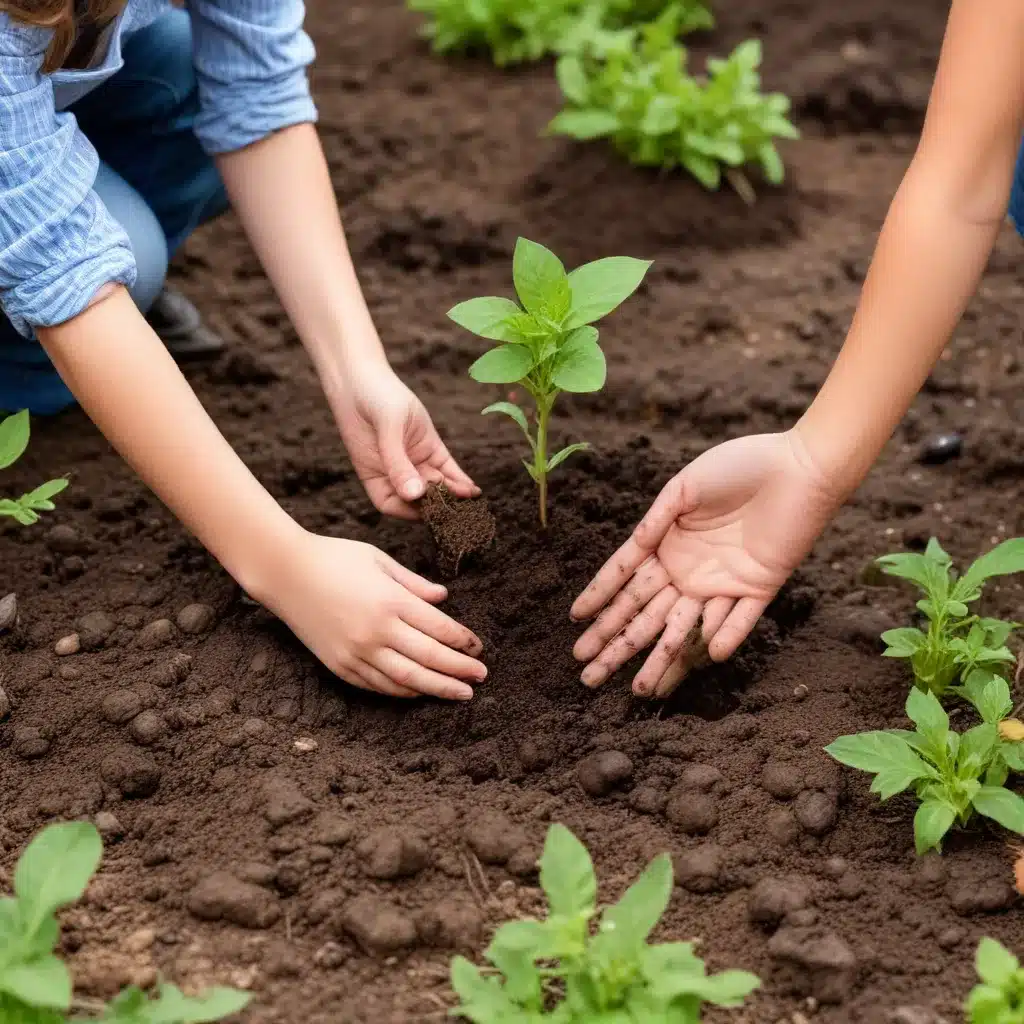
Educational Projects for Kids: Soil Science Experiments in the Farm Garden
At Crooked Pines Farm, we believe in the power of hands-on learning. For children, the garden offers endless opportunities to explore the fascinating world of soil science. By engaging kids in simple, interactive experiments, we can nurture their innate curiosity about the natural environment and foster a lifelong appreciation for sustainable farming practices.
Soil Composition
Let’s begin by understanding the fundamental components of soil. Soil is a complex, living ecosystem composed of mineral particles, decaying organic matter, air, water, and a diverse array of microorganisms. Exploring the various soil layers, textures, and pH levels can provide invaluable insights into the health and fertility of the garden.
Understanding Soil Layers
Invite your little ones to dig into the ground and observe the distinct layers of soil. The topsoil, or humus, is the nutrient-rich upper layer teeming with life. Beneath it lies the subsoil, a zone of mineral-dense, compact material. Further down, the bedrock forms the foundation. Encourage your children to describe the differences in color, texture, and even the presence of roots or rocks within each layer.
Identifying Soil Textures
Next, have your kids scoop up handfuls of soil and gently rub it between their fingers. Is it sandy, silty, or clayey? Prompt them to observe how the soil feels and behaves. Sandy soil will feel gritty, while clay-based soil will be sticky and malleable. Silt, a medium-sized particle, will have a smooth, almost powdery texture. This simple tactile exploration can teach children about the diverse compositions that make up healthy garden soil.
Analyzing Soil pH
Soil pH, a measure of acidity or alkalinity, plays a crucial role in plant growth. Use a simple pH test kit to determine the pH level of your garden soil. Most plants thrive in slightly acidic to neutral conditions, around pH 6.0 to 7.0. Discuss with your kids how certain plants, like blueberries or azaleas, prefer more acidic soil, while others, like tomatoes or lettuce, do better in slightly alkaline environments.
Soil Experiments for Kids
Now that your young scientists have a basic understanding of soil composition, it’s time to dive into some hands-on soil science experiments. These engaging activities will allow them to observe, hypothesize, and draw conclusions about the complex world beneath their feet.
Germination Observation
Plant a variety of seeds, such as beans, peas, or sunflowers, in small containers filled with your garden soil. Have your kids monitor the germination process, noting when the first sprouts appear and how the seedlings grow over time. Discuss the essential components for successful plant growth, like water, light, and nutrients.
Nutrient Absorption Tests
To investigate how plants absorb water and minerals from the soil, set up a simple experiment. Place celery or carnation stems in colored water and observe how the pigment travels up the plant’s vascular system. You can also try growing plants in soil with varying nutrient levels, such as adding compost or fertilizer to one pot, to see how it affects their development.
Composting Investigations
Demonstrate the importance of decomposition and nutrient cycling by creating a small-scale compost bin. Allow your children to add organic materials like fruit and vegetable scraps, leaves, and shredded paper. Encourage them to observe changes in temperature, texture, and the presence of decomposer organisms over time.
Exploring Soil Organisms
Soil is teeming with a diverse array of living creatures, from microscopic bacteria to larger invertebrates. Inviting your kids to closely examine the inhabitants of the garden can spark their fascination with the intricate web of life.
Identifying Soil Fauna
Use a magnifying glass or a simple bug catcher to observe the various soil organisms present in your garden. Look for earthworms, beetles, centipedes, and other invertebrates. Discuss how these creatures contribute to soil health and the decomposition process.
Observing Decomposition
Set up a decomposition station by burying different organic materials, such as leaves, eggshells, and food scraps, in separate containers filled with soil. Over time, have your kids dig up the containers and compare the rate of decomposition. This hands-on activity can demonstrate the crucial role that soil organisms play in breaking down organic matter and cycling nutrients back into the earth.
Studying Symbiotic Relationships
Explore the intricate relationships between plants and soil organisms, such as the symbiotic partnership between plant roots and mycorrhizal fungi. You can even grow a bean plant and observe the formation of nitrogen-fixing nodules on the roots, showcasing the mutually beneficial connections within the soil ecosystem.
Sustainable Gardening Practices
As your young soil scientists uncover the wonders of the living earth, introduce them to sustainable gardening techniques that promote soil health and biodiversity.
Mulching and Soil Conservation
Discuss the importance of mulching, a process that involves covering the soil surface with organic materials like wood chips or straw. Demonstrate how mulch helps retain moisture, suppress weeds, and gradually enrich the soil as it decomposes.
Crop Rotation and Companion Planting
Explain the benefits of crop rotation and companion planting, where different plants are grown together to enhance soil fertility and deter pests. Challenge your kids to design a garden layout that incorporates these strategies.
Vermicomposting and Organic Fertilizers
Inspire your children to create their own vermicompost bin, using red wiggler worms to transform food scraps into nutrient-dense organic fertilizer. Discuss how this sustainable practice can nourish the soil and support a thriving garden ecosystem.
By engaging your kids in these soil science experiments and sustainable gardening practices, you’ll not only nurture their natural curiosity but also empower them to become stewards of the land. At Crooked Pines Farm, we believe that hands-on learning in the garden lays the foundation for a lifelong appreciation of the natural world and a commitment to sustainable agriculture.


